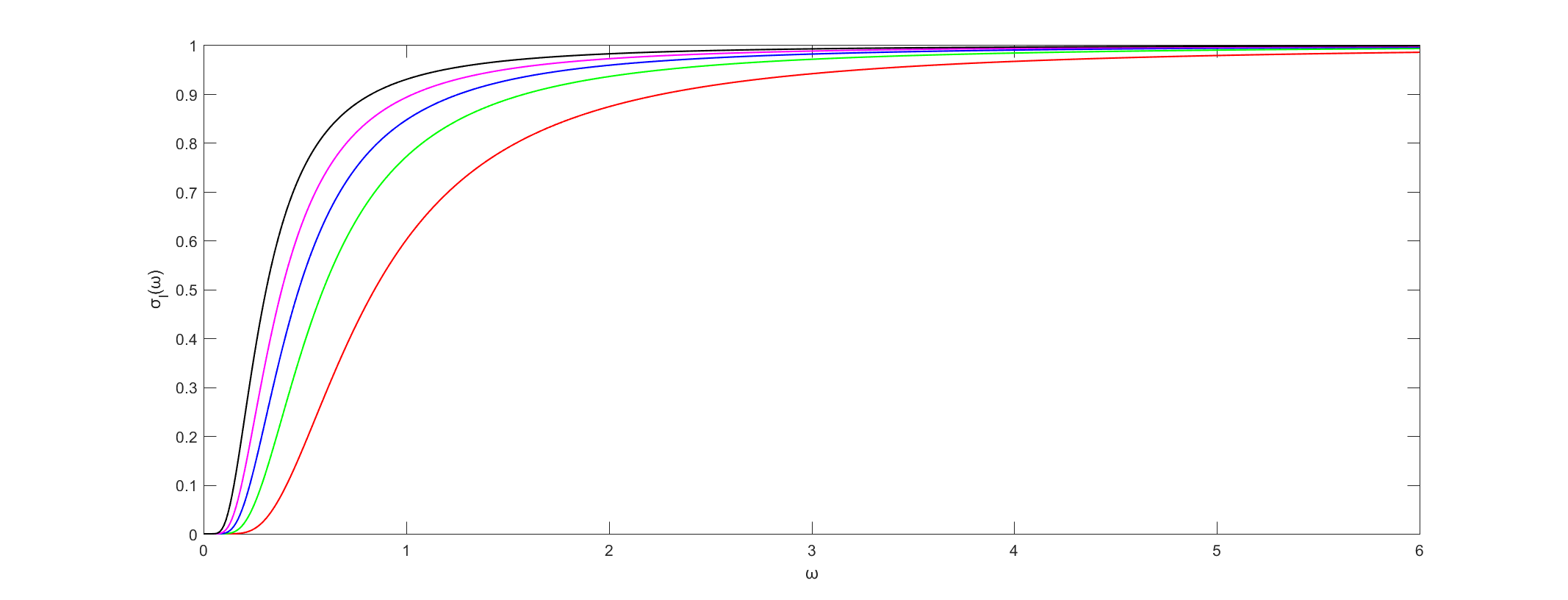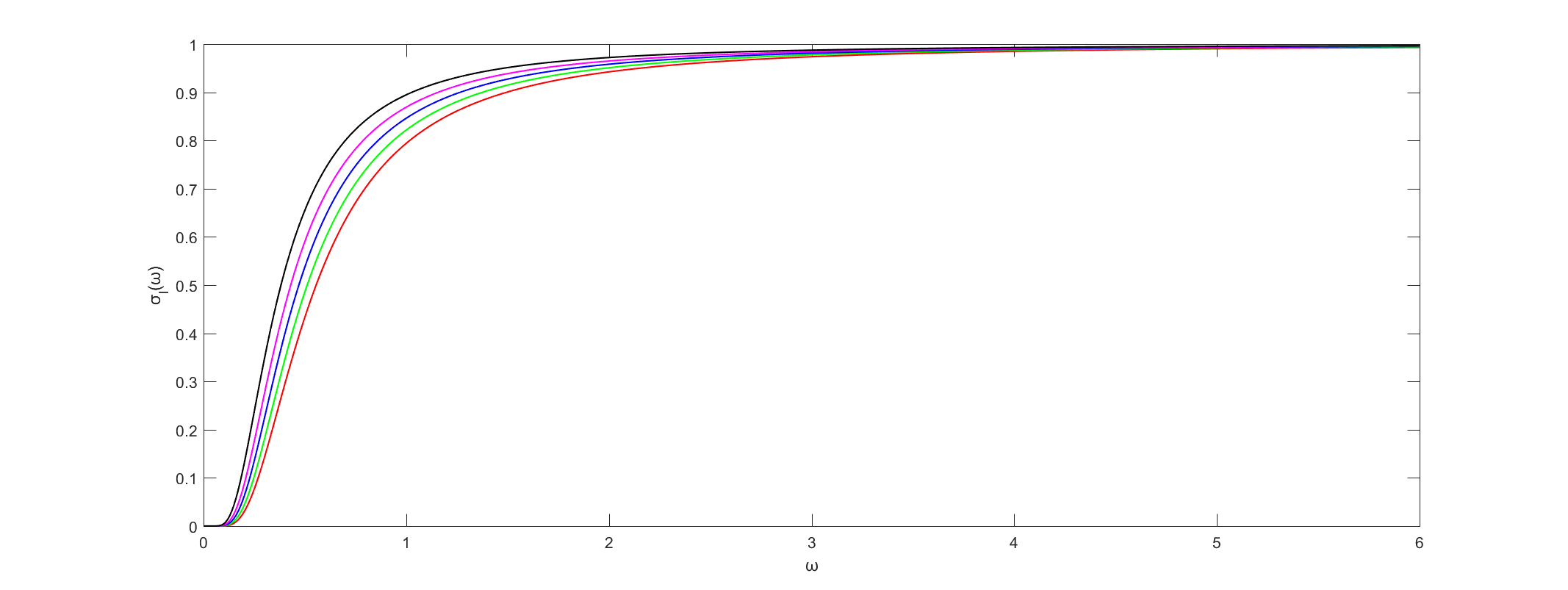In line with the analysis of refs.[5,21], we study the semiclassical tunnelling of particles through the horizon of black holes in this section. Further discussion can be seen in refs.[22-25]. On the one hand, the rate of emission will have exponential part given by [21]
|
|
|
(33) |
where is the tunnelling action of particles and is the imaginary part of the tunnelling action . On the other hand, according to the Planck radiation law, the emitted rate of particles with frequency can be written as [21]
|
|
|
(34) |
Therefore, combining eqs. and , the temperature at which the black hole radiates can be read off [21]:
|
|
|
(35) |
In section 3, we will study Hawking radiation process in Painlevé-Gullstrand coordinates. Firstly, we will rewrite the metric in Painlevé-Gullstrand coordinates. We define
|
|
|
(36) |
where is a function of radial coordinate . Then
|
|
|
(37) |
where . The time coordinate , in fact, corresponds to the time measured by a stationary observer at infinity [21]. Inserting into the general static and spherical metric
|
|
|
(38) |
where , then metric can be rewritten as
|
|
|
(39) |
We require
|
|
|
(40) |
and choose . Then
|
|
|
(41) |
Considering metric , then and , then we have
|
|
|
(42) |
where
|
|
|
(43) |
Then the metric can be rewritten in Painlevé-Gullstrand coordinates as follows:
|
|
|
(44) |
In the following part of section 3, we will take for convenience, i.e.,
|
|
|
(45) |
The action for a particle moving freely in a curved background can be written as:
|
|
|
(46) |
with
|
|
|
(47) |
where is an affine parameter along the worldline of the particle, chosen so that coincides with the physical 4-momentum of the particle. For a massive particle, this requires that , with the proper time [21]. For simplicity, in this paper we only consider the case of massless scalar field and ignore the angular directions. Following the spirit of ref.[21], we will obtain the formula of Hawking temrature for for spherical solutions in double field theory.
The radial dynamics of massless particles in spacetime are determined by the equations:
|
|
|
(48) |
|
|
|
(49) |
The second equation is the geodesic equation corresponding to the time-independence of the metric; in terms of the momentum defined in eq. , it can be written , and so has the interpretation of the energy of the particle as measured at infinity [21].
Now we consider the the trajectory of an outgoing particle. For classical Schwarzschild solution, outgoing trajectory which crosses the horizon is forbidden [21]. The analytic continuation of an outgoing trajectory with backwards across the horizon [21], however, will give rise to an imaginary term in our action, and this term actually represents the tunnelling amplitude [5]. For an outgoing particle, eq. can be factorised to yield, the equation
|
|
|
(50) |
In fact, for outgoing particles, the null implies which is consistent with the metric , i.e., at there exists a horizon.
From eq., we have
|
|
|
(51) |
Combining eqs. and , we obtain
|
|
|
(52) |
and
|
|
|
(53) |
For the case we are considering,
|
|
|
(54) |
Inserting eqs. and into , we have
|
|
|
(55) |
then
|
|
|
(56) |
Then Hawking temperature is given by eq.,
|
|
|
(57) |
Now we will consider the various limits we have listed in section 2.2.
If , and , then we have
|
|
|
(58) |
then
|
|
|
(59) |
which is consistent with the result of Schwarzschild black hole [21].
If , , after the radial coordinate redefinition, , then the metric reduces to Schwarzschild metric with negative mass. Therefore, there does not exist event horizon, namely, in the usual sense the Hawking radiation does not exist for this limit.
If , regardless of the sign of , from metric we have . Therefore, for this limit, the Hawking radiation does not exist.
If , then F-JNW solution can be recovered [8]. The location of event horizon can be obtained by setting . From metric , we have that the event horizon is located at . Combining eqs., and , we can obtain the Hawking temperature for F-JNW solution in principle although the integration is complicated.
If and , with the proper radius, , and a positive number, . According to metric , we can obtain the location of event horizon at , namely, . Then metric becomes . Therefore, for this limit, the Hawking radiation does not exist.
If with , then from metric , we obtain . In other words, no Hawking radiation exists.
In particular, if with , it is no longer necessary to impose the constraint . However, the gravity becomes repulsive and the orbital velocity becomes imaginary which has no physical sense [8].

